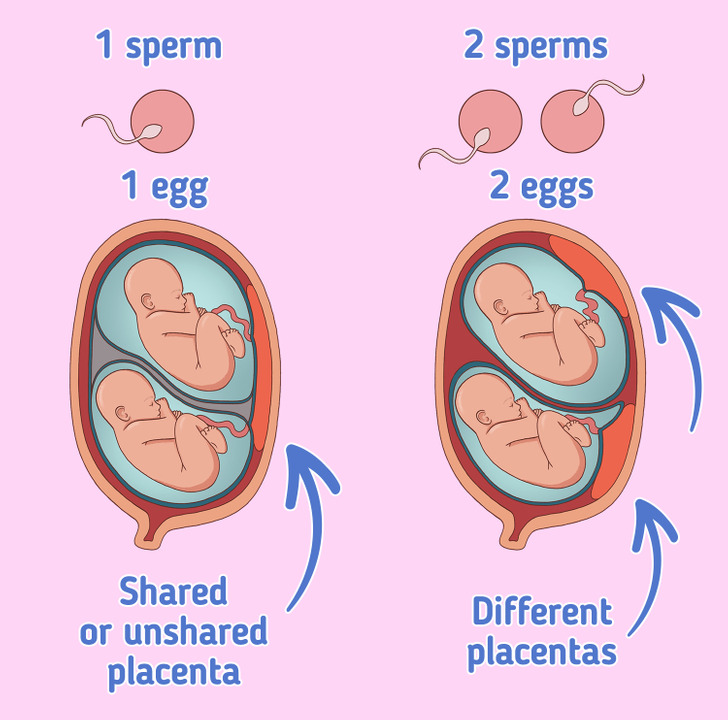The Difference Between Identical and Fraternal Twins
You’ve probably met twins that don’t look like one another and those that are identical. Why does this happen?
Identical (monozygotic) twins

- Identical twins are conceived from one egg and one sperm. A fertilized egg splits into two parts one of which will develop and become a separate organism. Such twins might have shared or different placentas and amniotic sacs. It depends on how early the egg splits into two parts.
- Identical twins have identical DNAs and are always of the same sex. Genetically, they are like clones but the development in the womb, the influence of the environment, and other factors actually form two different personalities.
- Identical twins often look a lot like each other. At the same time, around 1/4 of identical twins are mirror images of each other, which means the right side of one child matches the left side of their twin.
- Identical twins are less frequent than fraternal and are about 1/3 of all twins. The likelihood of birth of identical twins is 3 in 1,000, but in vitro fertilization (IVF) increases this chance by 2.
Fraternal (dizygotic) twins

- Fraternal twins appear when two different eggs are fertilized with two different sperms. Two different amniotic sacs and 2 placentas develop in the womb.
- Because fraternal twins appear from two completely different structures, they have different DNAs. They may be the same or of different sex. If you see twins where one of them is a boy and the other one is a girl, they are definitely fraternal twins.
- Like any other brothers and sisters, fraternal twins only have 50 % of shared genes. And they look like each other no more than siblings that were born at different times.
- The development of two eggs at the same time is called hyperovulation. It happens due to different facts, including age, height, high body mass index, multiple births, and race. Women from Central Africa give birth to fraternal twins more often and women from Asia and Latin America rarely have fraternal twins.
- A tendency toward hyper-ovulation can be a genetic trait.
- Fraternal twins are more frequent than identical. They are 2/3 of all twins.
Share This Article